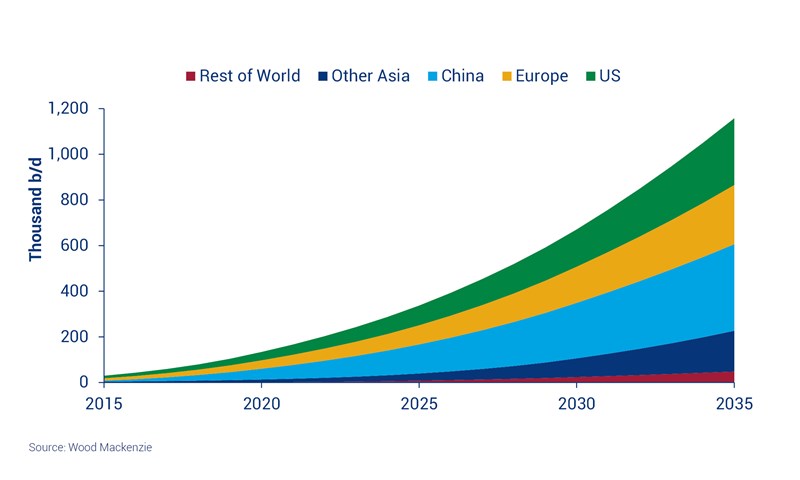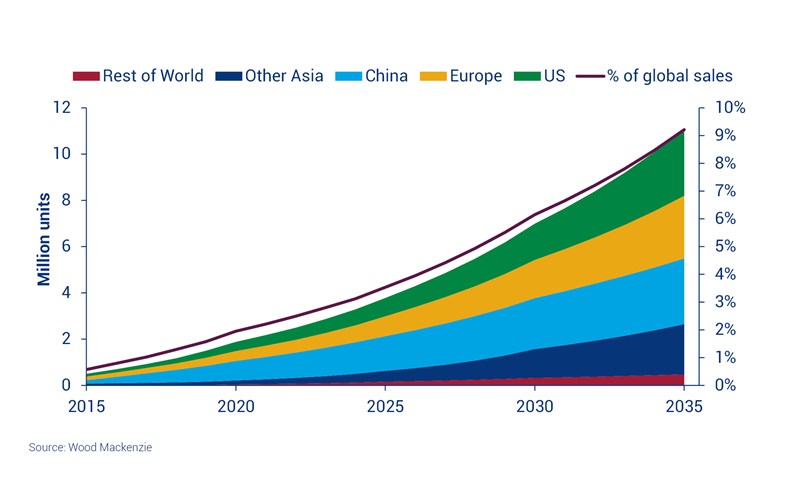Discuss your challenges with our solutions experts
In the latest instalment of our global trends to 2035 series, we forecast the threat to oil demand from electric vehicles.
Transport is set to continue as a key driver of energy demand. The growing markets of China, India and the Middle East will put so many new cars on the road that oil use for transport fuel will keep growing, requiring 12% more barrels in 2035 than in 2016.
Yet the threat from electric vehicles (EVs) beyond 2025 is material. Sales are growing exponentially and have outpaced expectations, boosted by faster than anticipated battery improvements.
So, to just what extent will oil be threatened by advancements in EVs?
Expected growth of EVs by region
In our current base case, we see the accumulative number of EVs reaching almost 100 million by 2035, taking around one to two million barrels per day of oil demand.
Dramatic growth in electric vehicle market
However, given the average lifespan of a car is more than 10 years, it will take decades for EVs to significantly penetrate the global car fleet (currently they account for 1%).
The high unit cost, relative to traditional vehicles, is the most significant barrier. Their competitiveness will largely depend on the rate at which this cost comes down, which is itself reliant on battery technology advancements.
Sales have shown to be highly dependent on subsidies and so the level of market penetration will also depend on government policies. Indeed, there is a downside risk from changes to US environmental policy under President Trump, which could reverse the decline in gasoline demand.
Meanwhile, carbon policies in China and other emerging markets could create upside for EVs as governments try to find alternatives to oil in mass transport.







